Discover 20 hidden attractions, cool sights, and unusual things to do in Salamanca (Spain). Don't miss out on these must-see attractions: New Cathedral of Salamanca, Plaza Mayor, and Old Cathedral of Salamanca. Also, be sure to include Monument to Columbus in your itinerary.
Below, you can find the list of the most amazing places you should visit in Salamanca (Castile and León).
Table of Contents
New Cathedral of Salamanca
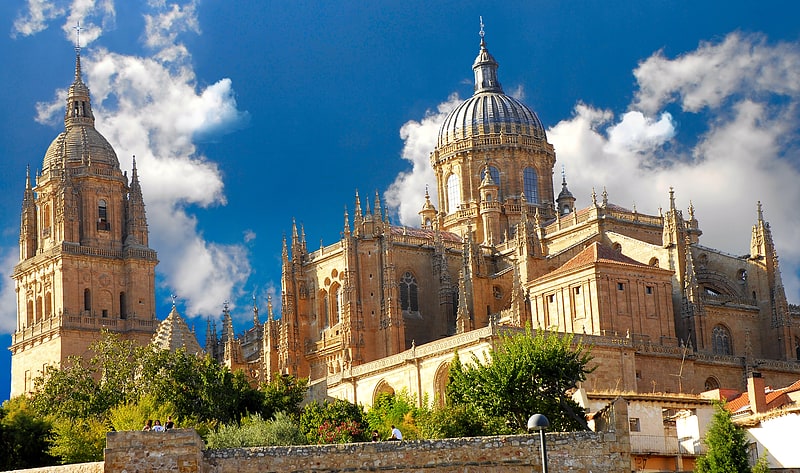
Also known as: Catedral Nueva de Salamanca
Ornate structure with unique carvings. The New Cathedral is, together with the Old Cathedral, one of the two cathedrals of Salamanca, Spain. It was constructed between the 16th and 18th centuries in two styles: late Gothic and Baroque. Building began in 1513 and the cathedral was consecrated in 1733. It was commissioned by Ferdinand V of Castile of Spain. It was declared a national monument by royal decree in 1887.[1]
Address: Plaza Juan XXIII 4, 37008 Salamanca
Plaza Mayor
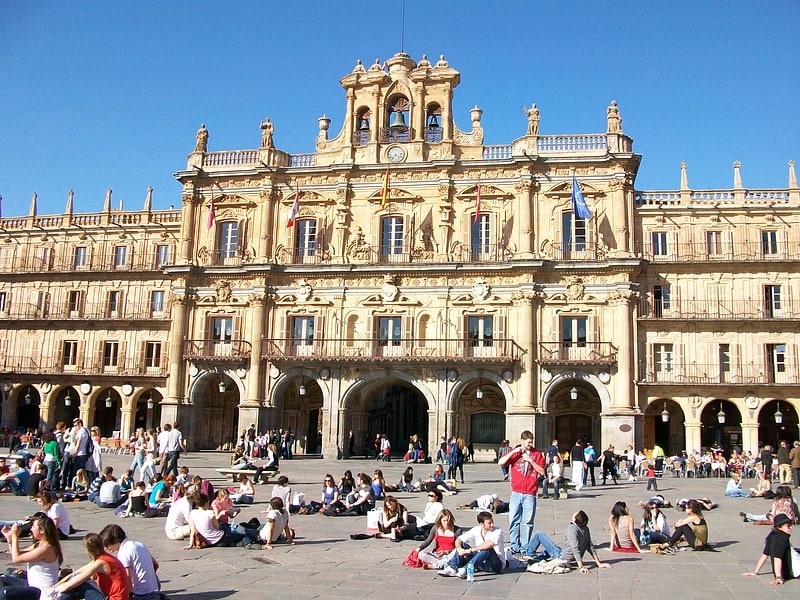
18th-century baroque public square. The Plaza Mayor in Salamanca, Spain is a large plaza located in the center of Salamanca, used as a public square. It was built in the traditional Spanish baroque style and is a popular gathering area. It is lined by restaurants, ice cream parlors, tourist shops, jewelry stores and a pharmacy along its perimeter except in front of the city hall. It is considered the heart of Salamanca and is widely regarded as one of the most beautiful plazas in Spain. It is connected to the shopping area Calle del Toro from the northeast, Calle de Zamora from the north, the restaurants on Calle de Concejo from the northwest, Calle del Prior and the small Calle de la Caja de Ahorros from the west as well as Plaza del Corrillo from the south.[2]
Address: Plaza Major, 37008 Salamanca
Old Cathedral of Salamanca

Also known as: Catedral Vieja de Salamanca
Cathedral in Salamanca. The Old Cathedral is one of two cathedrals in Salamanca, Spain, the other being the New Cathedral of Salamanca. The two cathedrals are joined together.[3]
Address: C. Cardenal Pla y Deniel, 37008 Salamanca
Monument to Columbus
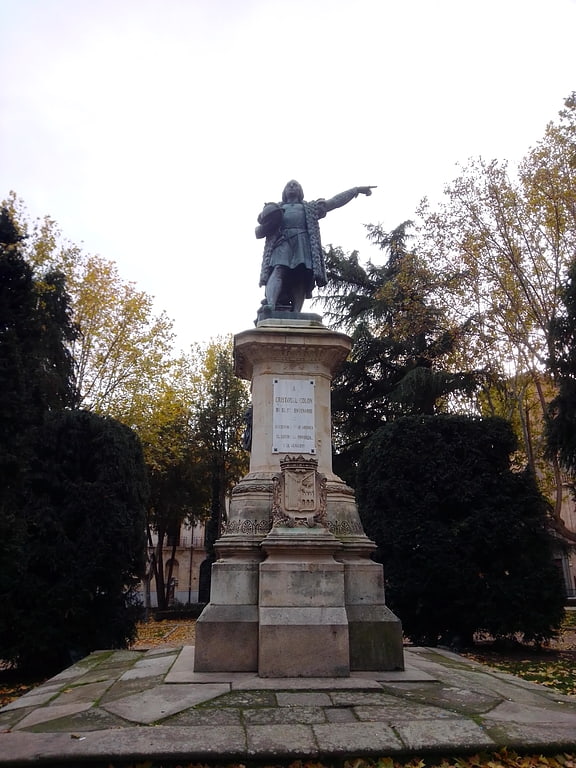
The Monument to Columbus is an instance of public art in Salamanca, Spain. The monument, dedicated to Christopher Columbus, is erected on the centre of the namesake plaza.[4]
Verraco of the bridge
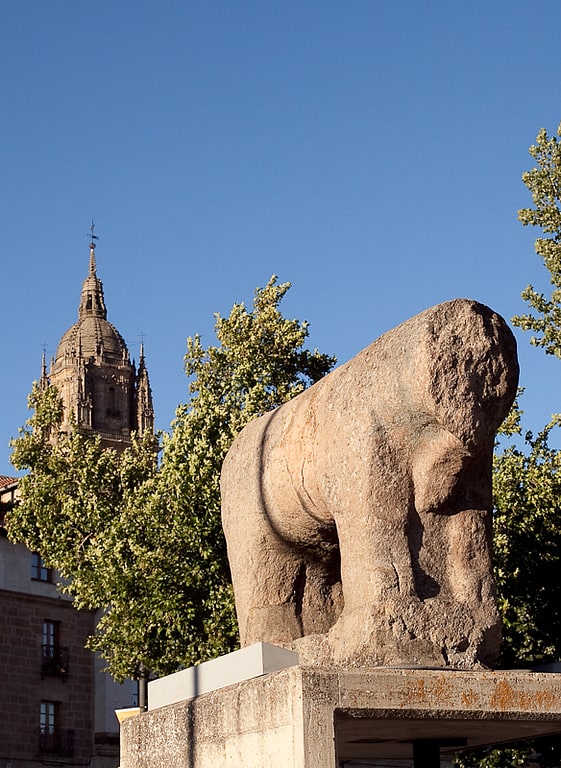
Sculpture in Salamanca, Spain. The verraco of the bridge in Salamanca, Spain, is an Iron Age stone statue depicting a bull, placed at the entrance of the Roman bridge. Verraco is a general term that refers to the stone statues of animals made by the Vettones, one of the pre-Roman peoples of the Iberian Peninsula. In Spanish the word verraco means "breeding pig", but other animals such as bulls and bears were also represented.
The verraco of the bridge is also known as the "bull of Salamanca", or the "bull of the bridge". It is the oldest statue in the city and appears in its coat of arms. Its dimensions are 2.10 metres (6 ft 11 in) long, 1.57 metres (5 ft 2 in) meters tall, and 70 centimetres (2.3 ft) wide. The head is missing and the body broken in half, but was rebuilt.[5]
Convento de San Esteban
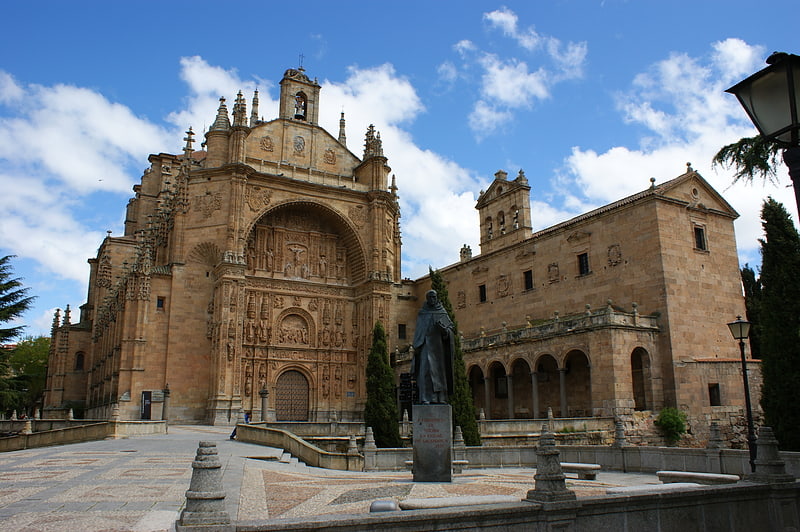
Grand, historic Dominican monastery. The Convento de San Esteban is a Dominican monastery situated in the Plaza del Concilio de Trento in the city of Salamanca.[6]
Address: Pz. del Concilio de Trento, s/n, 37001 Salamanca
Casa Lis
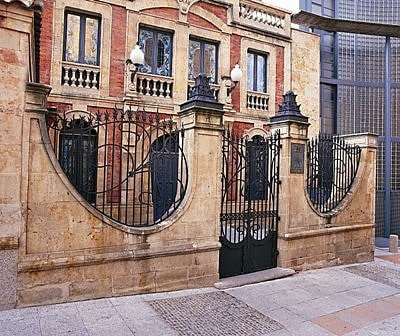
Museum in Salamanca, Spain. The Casa Lis is a museum located in the ancient city wall of Salamanca, Spain. Also known as Museo Art Nouveau and Art Déco, it is a museum of decorative arts, with exhibits dating from the last decades of the 19th century to World War II.[7]
Address: Gibraltar, 18, 37008 Salamanca
Convento de las Dueñas
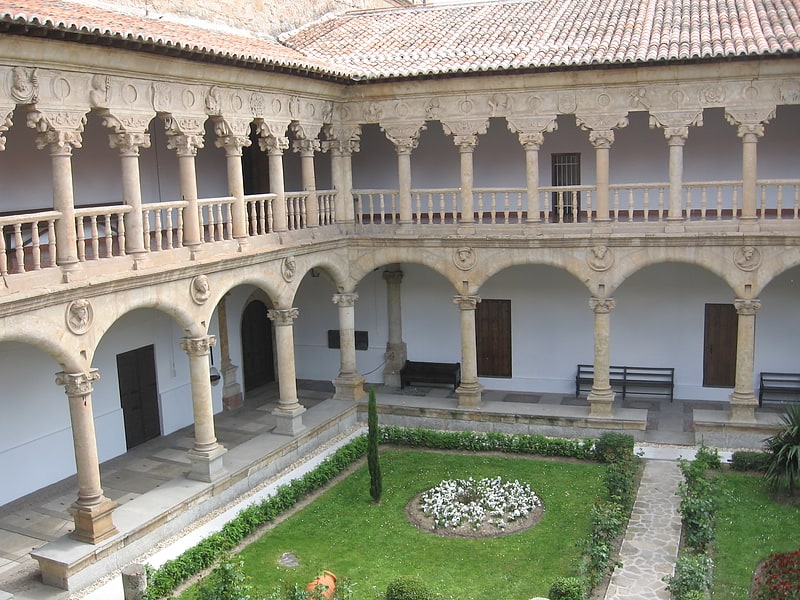
Enduring convent with a scenic cloister. The Convento de las Dueñas is a Dominican convent located in the city of Salamanca. It was built in the 15th and 16th centuries.[8]
Address: Plaza del Concillo de Trento, Salamanca
Puente Romano
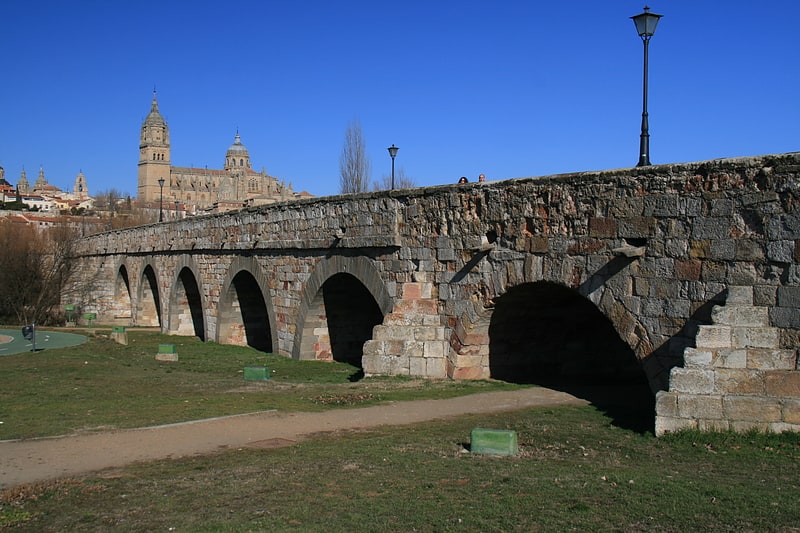
Also known as: Puente romano de Salamanca
Bridge in Salamanca, Spain. The Roman bridge of Salamanca, also known as Puente Mayor del Tormes is a Roman bridge crossing the Tormes River on the banks of the city of Salamanca, in Castile and León, Spain. The importance of the bridge as a symbol of the city can be seen in the first quartering of city's coat of arms. It has been known traditionally as puente mayor and as puente prinçipal which gives access to the southern part of the city. The bridge as it currently appears is a result of several restorations. One of the disasters that most affected it was the Flood of San Policarpo on the night of January 26, 1626. It was declared Artistic Historic Monument on June 3, 1931, and Bien de Interés Cultural since 1998. Until the beginning of 20th century it carried the main road into the city, and continued to bear heavy traffic until 1973. After the construction of a third bridge for road traffic it remains exclusive for pedestrians.
The bridge is actually a construction of two bridges separated by a central fortification: the old bridge which extends along the portion near the city and is of Roman origin, and the new bridge. Of the twenty-six arches, only the first fifteen date from Roman times. The stone used in its construction differs in origin, while employed in Roman bridge area is originally from the granite quarries of Los Santos (Béjar), the stone used in the hispana part and more modern bridge, comes from the area of Ledesma. The bridge has been restored on numerous occasions and has survived several attempts at demolition. Many of the restorations have been poorly documented, leaving for the study of archaeologists a great part of the work of determination, dating and explaining the ancient construction techniques. The date of the construction of the bridge is not precisely known, but is among the mandates of the Emperors Augustus (27 B. C.-14 D. C.) and Vespasian (69-79), making it a bimillennium architectural monument.[9]
Address: C/ del Puente Romano, 37008 Salamanca
Church of Sancti Spiritus
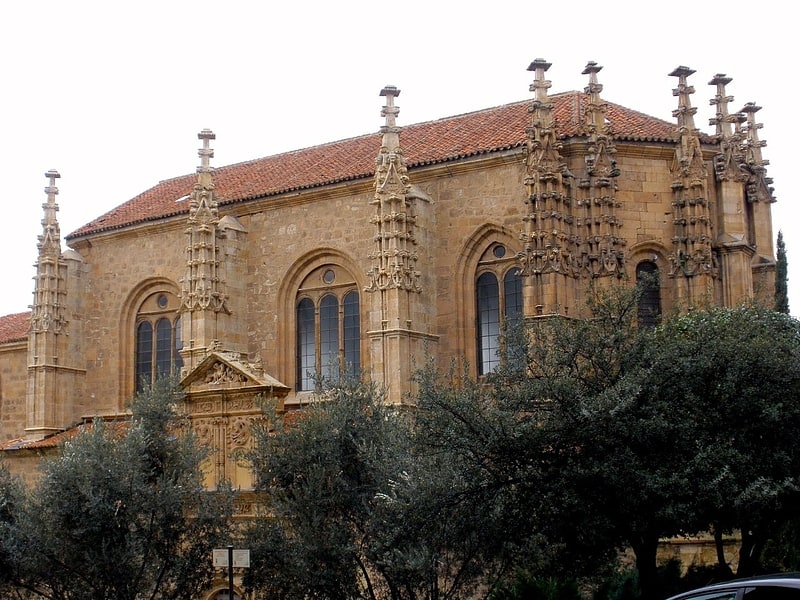
Also known as: Iglesia de Sancti Spiritus
Parish in Salamanca, Spain. The Church of Sancti Spiritus is a church located in Salamanca, Spain. It was declared Bien de Interés Cultural in 1888.[10]
Address: Ronda Sancti-Spíritus, 24, Salamanca
Casa de las Conchas
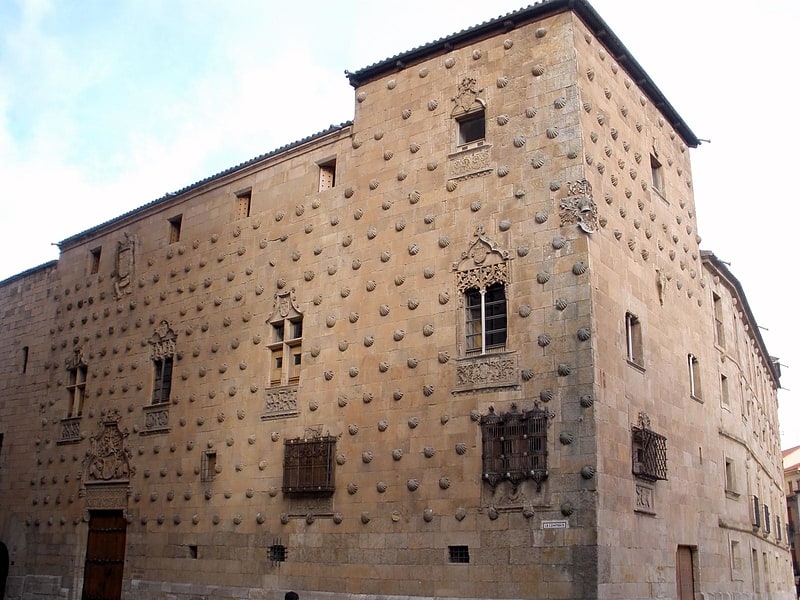
Shell-covered Spanish Gothic palace. The Casa de las Conchas is a historical building in Salamanca, central Spain. It currently houses a public library.
It was built from 1493 to 1517 by Rodrigo Arias de Maldonado, a knight of the Order of Santiago de Compostela and a professor in the University of Salamanca. Its most peculiar feature is the façade, mixing late Gothic and Plateresque style, decorated with more than 300 shells, symbol of the order of Santiago, as well as of the pilgrims performing the Way of St. James. In the façade are also the coat of arms of the Catholic Monarchs and four windows in Gothic style, each one having a different shape. The entrance portal has the coat of arms of the Maldonado family, while in the architrave are dolphins, a Renaissance symbol of love, and vegetable elements.
The inner court is characterized, in the lower floor, by arches supported by square pilasters, while in the upper ones they are supported by shorter columns in Carrara marble.[11]
Address: Calle Compania 2, 37002 Salamanca
Colegio Mayor de Santiago el Zebedeo
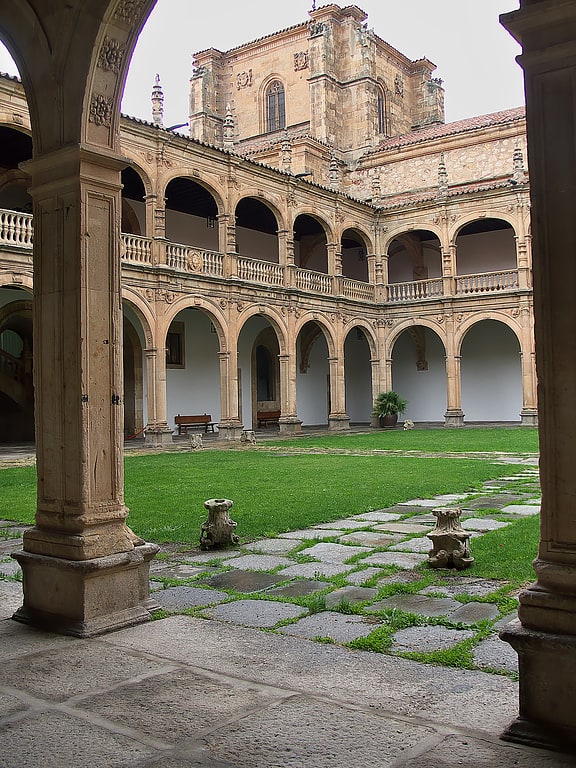
Also known as: Colegio del Arzobispo Fonseca
The Colegio Mayor de Santiago, el Zebedeo, Colegio del Arzobispo or Colegio Mayor de Fonseca is a historical edifice in Salamanca, Spain, founded in 1519 by Alonso de Fonseca, archbishop of Santiago de Compostela, in order to provide Galician students with a college in which to study within the University of Salamanca. It is one of the Colegios Mayores of Salamanca and was later known as the Colegio de los Irlandeses or the Irish College.[12]
Address: Calle Fonseca, 4, 37002 Salamanca
Plaza de Toros La Glorieta
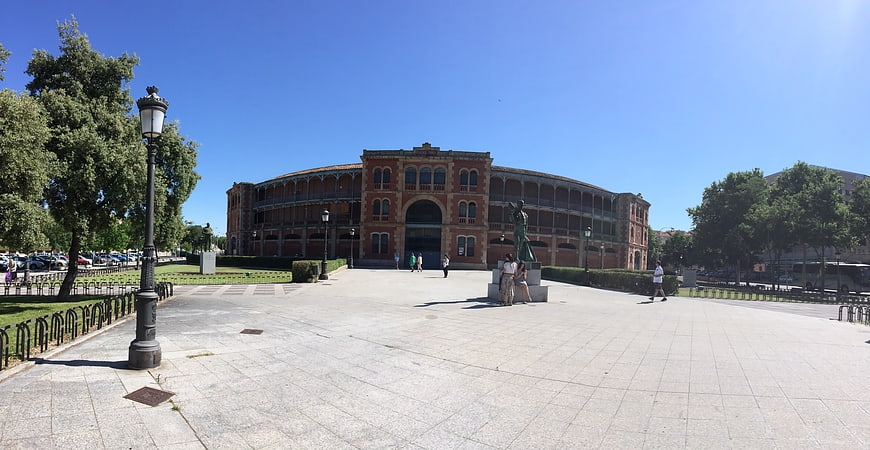
Stadium in Salamanca, Spain. Plaza de toros de Salamanca – La Glorieta, nicknamed La Glorieta or Plaza de Toros de La Glorieta, is a bullring at Avenida San Agustín, 1, Salamanca, Castile and León, Spain. It is currently used for bull fighting. The stadium holds 10,858 people. It was built in 1892 and officially opened on September 11, 1893. It is classical in style and has three levels made of stone, wrought-iron and brick. The ring is 54 metres in diameter.[13]
Address: Avenida San Agustin 1, 37005 Salamanca
Casa-Museo de Miguel de Unamuno
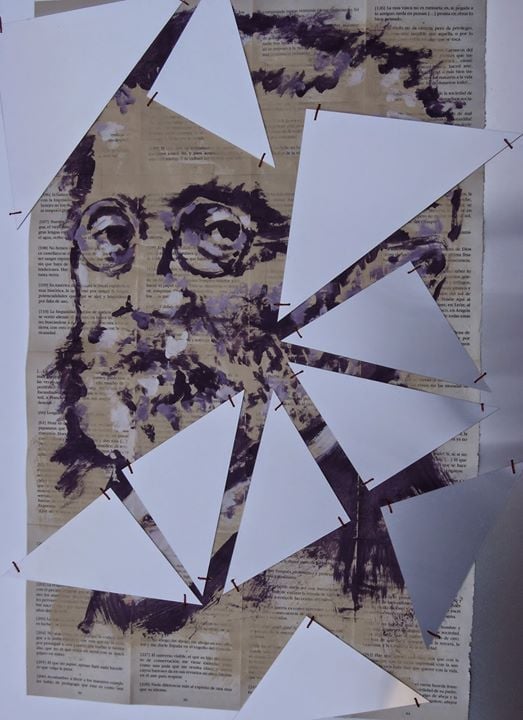
Museum, Specialty museum
Address: Calle Libreros, 25, 37008 Salamanca
Museo Taurino de Salamanca
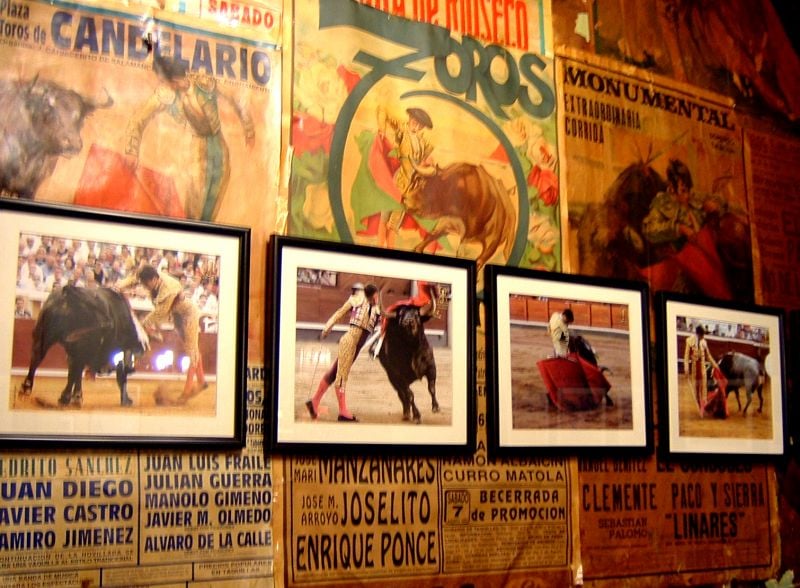
Museum, Specialty museum
Address: Calle Doctor Pinuela 5-7, 37002 Salamanca
Torre del Clavero
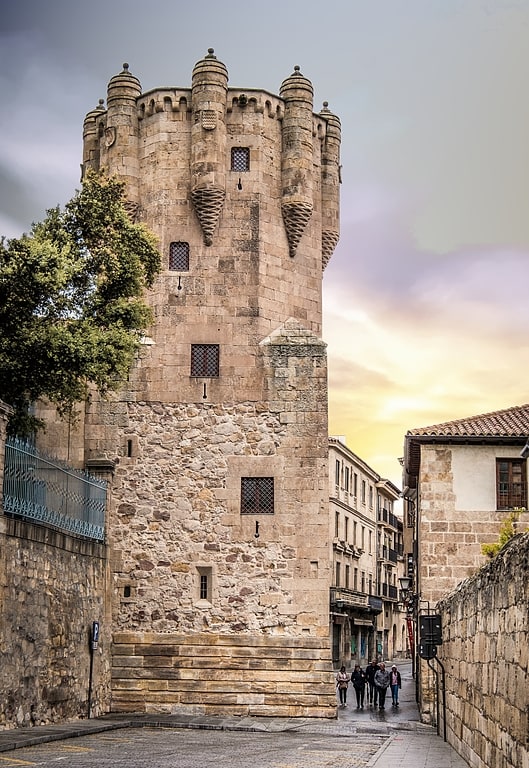
The Clavero Tower constitutes one of the most typical and well-known monuments of the city of Salamanca, in Spain. It was declared a national monument on June 3, 1931.
Museo de Historia de la Automoción
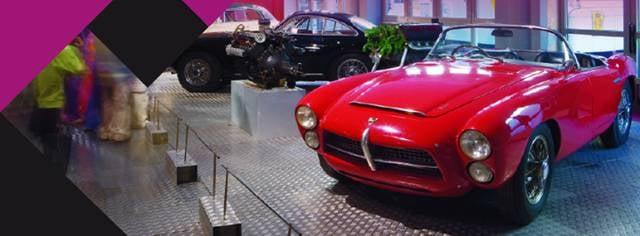
Museum, Specialty museum, History museum
Address: Mercado Viejo, 37008 Salamanca
University of Salamanca
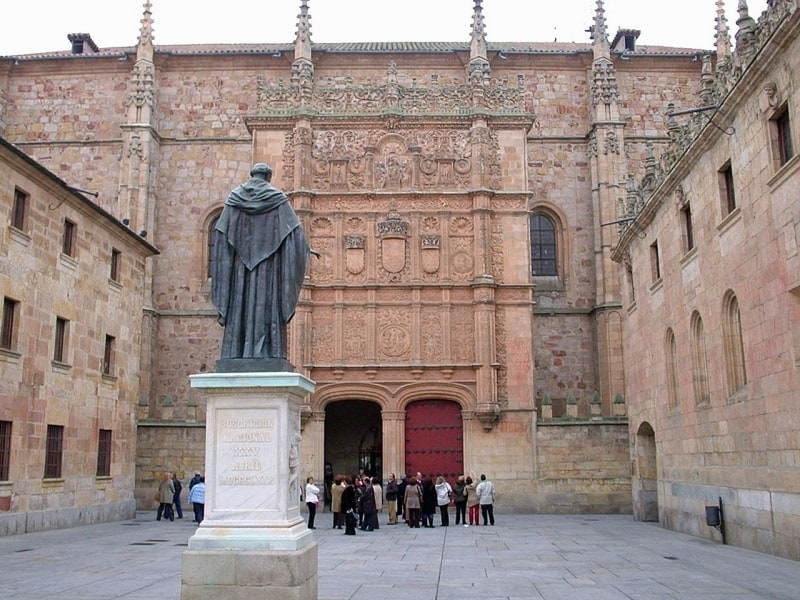
Also known as: Universidad de Salamanca
Higher educational institution in Salamanca, Spain. The University of Salamanca is a Spanish higher education institution, located in the city of Salamanca, in the autonomous community of Castile and León. It was founded in 1218 by King Alfonso IX. It is the oldest university in the Hispanic world and one of the oldest in the world in continuous operation.[14]
Address: Plaza Patio de Escuelas Menores 1, 37008 Salamanca
Mercado Central de Abastos

The Central Market of Salamanca is a food market in the city of Salamanca. It is located in the center of the Plaza del Mercado adjacent to the Plaza Mayor. It was designed by the Jerez architect Joaquín de Vargas y Aguirre in the early twentieth century. Inside, the typical ingredients of the gastronomy of the province of Salamanca are offered for sale. The market was restored in 2001.
Museo del Comercio y la Industria
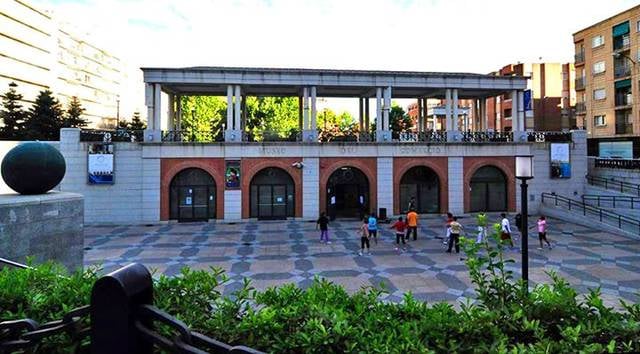
The Museum of Commerce and Industry, of Salamanca, is a museum dedicated to recover and preserve the memory about the economic, industrial and mercantile activity, especially of the city and its province. The creation of the museum was promoted by the City Council of Salamanca and the Official Chamber of Commerce and Industry of Salamanca, was inaugurated in January 2006. Built in the old cisterns of pillars and solid brick vaults that have been carefully restored to house inventions and innovations that once solved the problems of manufacturers, sellers and consumers.
Address: Avenida Campoamor s/n, 37003 Salamanca